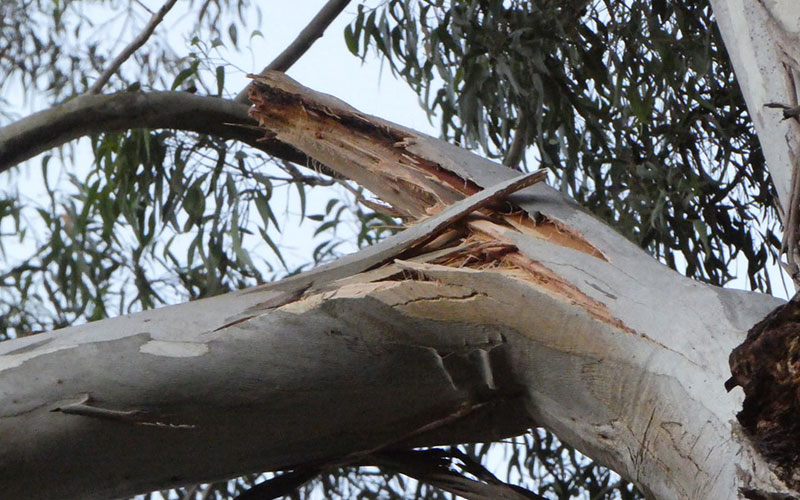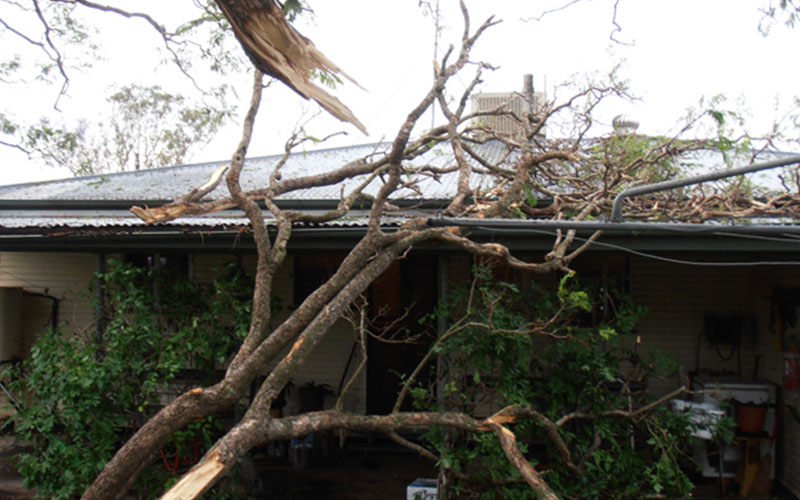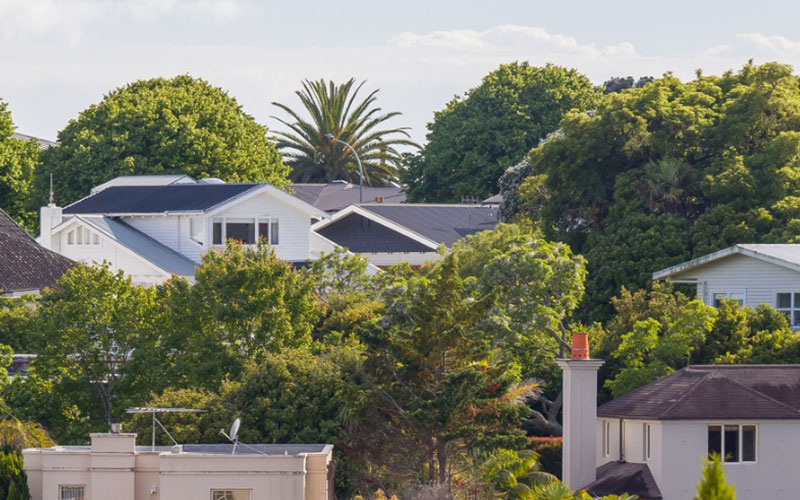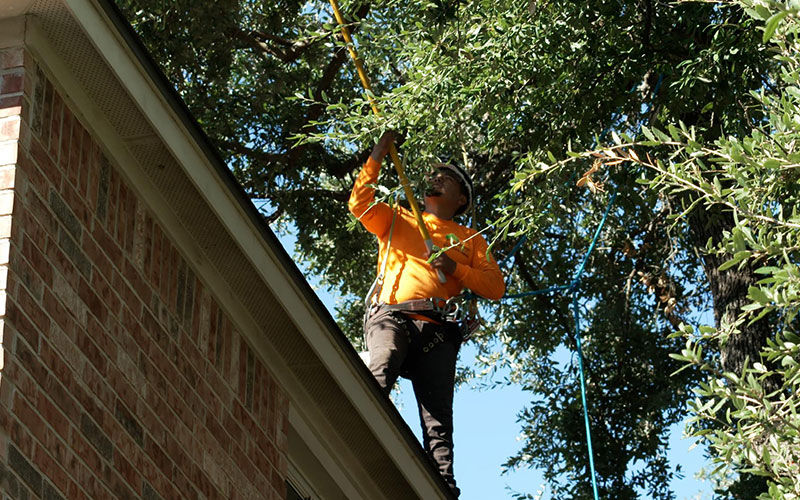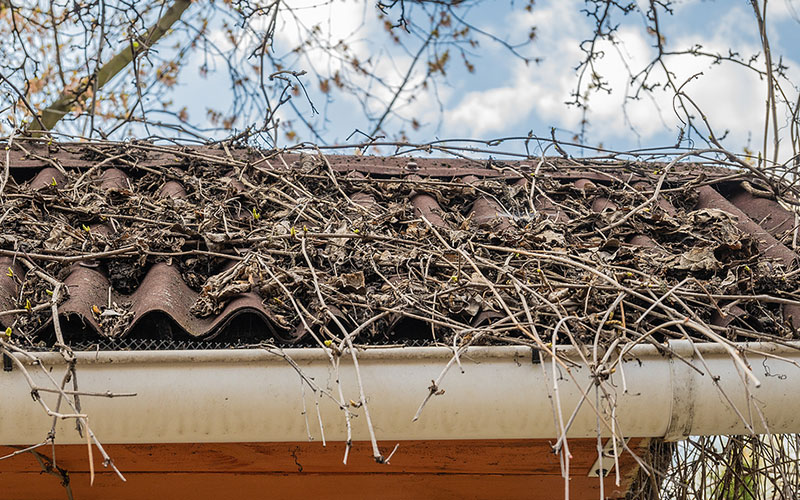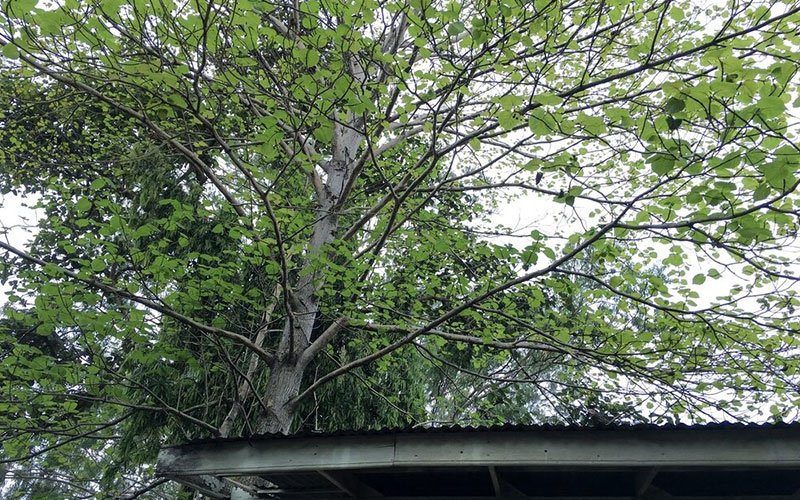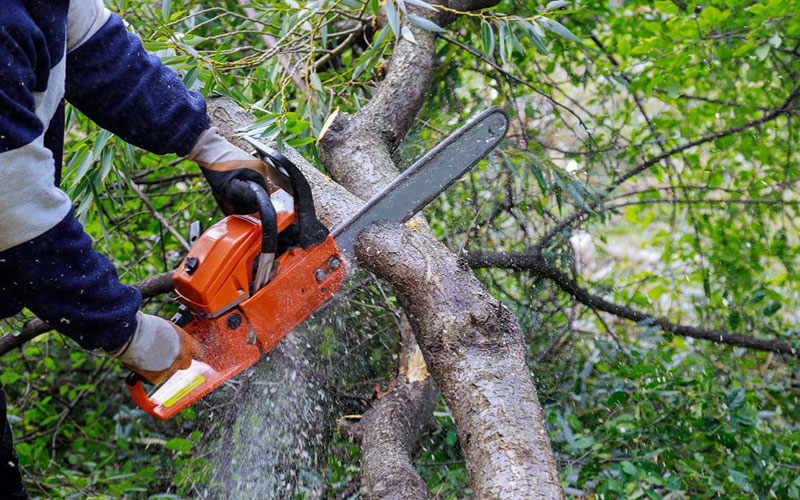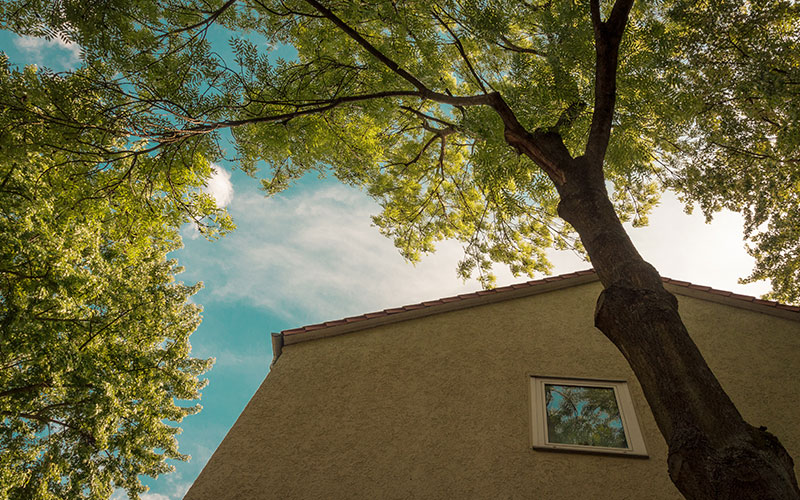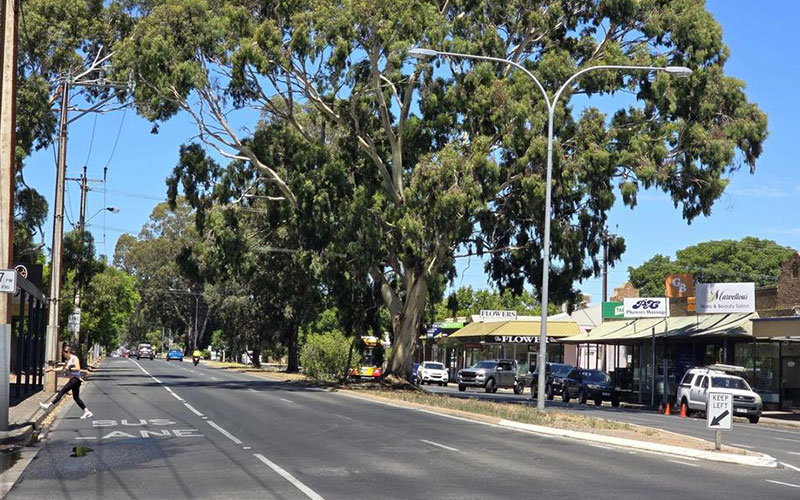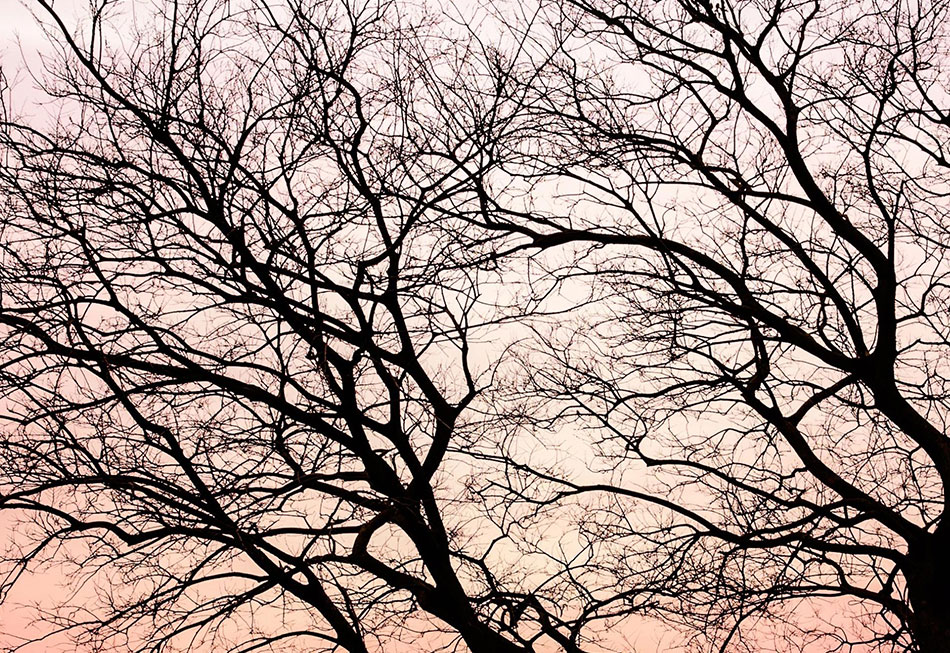
Tree Branches Overhanging Roof – Why & When to Remove Them
Throughout Werribee, Melbourne, and Geelong, trees can be seen everywhere and add to the aesthetic appeal and environmental health of our communities. Yet, for all their beauty and benefits, there comes a time when the branches overhang a little too close to our homes, particularly our roofs, posing risks that cannot be overlooked. Milone’s Tree Solutions, a local tree care industry specialist, brings a wealth of expertise to the table, ensuring your trees enhance your property safely and sustainably.
In This Article:
- Understanding the Risks
- Clearance for Property Works
- Legal and Neighbourly Considerations: Who is Responsible?
- Removing the Entire Tree That’s Overhanging the Roof
- Tree Care Strategies & Proactive Maintenance
- Benefits of Crown Thinning Include
- Advantages of Crown Raising Include
- Our Recommendations
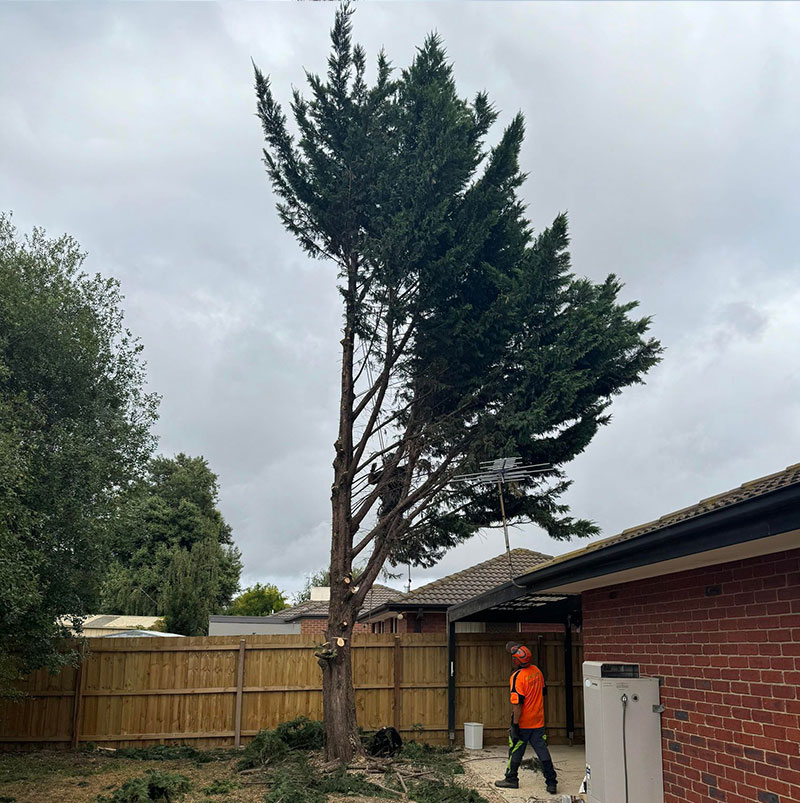
Understanding the Risks
Property Damage
When branches sway too close to your roof, the risk of physical damage is ever-present. The abrasion from branches and leaves can wear down roofing materials, from tiles to colorbond and metal roof coatings, potentially leading to leaks and costly repairs.
Tree sap is also challenging to clean off from a colorbond roof, as you cannot use any mineral or solvent-based cleaners, as this can damage the protective colorbond coating.
When branches touch your roof, they create an environment conducive to mould growth. Mould can compromise your home’s structure and pose health risks. To mitigate this risk, it’s crucial to understand the types of mould that can develop and the potential consequences of neglecting this issue. – Arboristnow
Safety Hazards
The threat of a branch falling during a storm isn’t just theoretical. It is widespread in Victoria, such as the 2021 disaster where a tree completely crushed a Kallista home, highlighting the grave safety risks that large overhanging branches can pose.
In 2015, a two-year-old boy was killed after a tree fell on a family home in Melbourne.
The Broader Impact
Beyond immediate damage, overhanging branches contribute to blocked gutters, increased fire risks, and the spread of diseases and pests. Each of these factors can compound the damage to your property, making proactive management essential.
Clearance for Property Works
Solar Panel Installations
Solar panels need clear skies to operate efficiently, and removing overhanging branches is often necessary for the installation. Removing these overhanging branches maximises sunlight exposure and prevents debris accumulation.
Your solar panel installation company should advise upfront if tree trimming or removal is required. For more information, read our guide on Tree Removal For Solar Panel Installation.
Roof Restoration & Roof Works
Imagine you had your roof painted or restored only to have branches and debris ruin the finish.
Nearby branches can compromise the integrity of your roof restoration work. Removing these branches ensures the durability of the new paint job and overall roof health, a point stressed by roofing experts like Brett Winter from Vivify Roofing.
When inspecting buildings for gutter cleaning we always advise our customers whether any overhanging tree branches need pruning. – Gutterclearningmelbourne
Legal and Neighbourly Considerations: Who is Responsible?
In Victoria, the management of tree branches that encroach upon neighbouring properties presents a tricky interplay of legal, communal, and environmental considerations. At the heart of this issue lies a blend of general property law and ‘common law’.
Is the tree owner required to trim their tree?
According to these legal frameworks and as published on disputes.vic.gov.au, the owner of a tree is typically not obligated to maintain or trim the tree unless it begins to cause damage or becomes a nuisance to neighbouring properties. This nuanced legal stance underscores the importance of homeowners being proactive in managing trees on their property to prevent potential disputes or damage.
Can I make the tree owner pay for tree work?
While tree owners are not legally required to bear the costs of tree maintenance, they might choose to do so as a preventive measure to mitigate the risk of causing damage to neighbouring properties. This proactive approach fosters good neighbourly relations and minimises potential disputes arising from property damage.
What are the rules governing trimming someone else’s branches?
Homeowners have the right to trim branches that extend into their property from a neighbour’s tree. However, it’s important to note that such maintenance must be carried out at the homeowner’s expense. This action is often considered a reasonable step to protect one’s property from possible harm or nuisance caused by overhanging foliage.
Tree branches that overhang or touch roofs can also cause localized leaf loss, which leads to an accumulation of leaves inside your gutter system and on top of your roofing. Overtime, the sitting foliage and debris will develop excessive moisture, causing mold and mildew growth. Such growth, if never uncovered and treated, can lead to roof deterioration and subsequent leaks. – acompletetreecare
Local Council Regulations
On top of that, the legalities surrounding tree maintenance and responsibility are also influenced by local council regulations. Trees, especially those of significant age and historical value or those contributing to the local biodiversity, may be protected under specific council rules. Homeowners facing issues with overhanging branches should first consult with their local council to determine whether the tree in question falls under such protections.
It’s crucial to note that councils generally do not intervene in disputes between neighbours over tree issues, nor will they undertake the trimming of trees on private property unless the tree resides on council-managed land.
Removing the Entire Tree That’s Overhanging the Roof
In certain situations, pruning or trimming overhanging branches may not suffice to mitigate the risks posed by a tree close to your home. When a tree’s structure or health significantly threatens property safety, removing the entire tree might be the best option.
When to Consider Tree Removal:
- Compromised Tree Health: Trees that are diseased, dying, or dead can pose a significant risk of falling, especially during adverse weather conditions.
- Structural Risks: Trees with structural issues, such as significant leaning towards the property or large branches overhanging critical areas, may require removal to ensure safety.
- Irreversible Damage Potential: In cases where the potential for property damage is high and cannot be mitigated by trimming or other maintenance methods.

Benefits of Professional Tree Removal:
- Safety: Professionals have the training and equipment to remove trees safely, reducing the risk of injury or property damage.
- Compliance: Expert arborists are familiar with local regulations and can ensure that tree removal is performed in accordance with legal requirements.
- Peace of Mind: Knowing that a potentially hazardous tree has been safely removed from your property can provide significant peace of mind, protecting your home and loved ones.
While the decision to remove a tree is never taken lightly, in certain circumstances, it is the most responsible action to ensure the safety and integrity of your property. Consulting with the qualified arborists at Milone’s Tree Solutions can provide you with the guidance needed to make an informed decision about tree removal.
Generally, you can cut or remove a tree on your land whenever you want unless it’s protected by an environmental overlay. Your local council can tell you if it is and if so, you’ll need a permit. – Disputes.vic.gov.au
Tree Care Strategies & Proactive Maintenance
Just because a tree is overhanging or close to a roof does not mean it needs to be removed. Tree care goes beyond reactive measures; specific techniques from an Arborist, such as crown reduction, crown thinning and raising, can mitigate risk to your roof and promote the tree’s health and longevity.
Crown Thinning: Enhancing Tree Health and Structure
Crown thinning is a specialised pruning technique that reduces a tree’s crown density. By carefully selecting and removing branches, this method improves light penetration and airflow throughout the tree. This strategic approach not only bolsters the tree’s structural integrity but also its aesthetic appeal.
Benefits of Crown Thinning Include:
- Improved Airflow: By enhancing circulation within the crown, the tree’s risk of succumbing to diseases diminishes.
- Increased Light Penetration: Sunlight more effectively reaches the lower branches and ground beneath, benefiting both the tree and your roof.
- Weight Reduction: Lightening the crown’s load reduces stress on the tree’s structure, promoting longevity and health and limiting the risk of a tree limb falling on your roof.
Crown Reduction: Controlling Size for Safety and Beauty
Crown reduction targets the size and spread of the tree’s crown, making it more proportionate to its surroundings. This method is beneficial for addressing overhanging branches that pose risks to property and for keeping trees within a manageable size for their location.
If the branches over or near your home are particularly large, you’re only one strong storm away from that branch crashing through your roof. – ltrc-tree
Key Aspects of Crown Reduction Include:
- Selective Branch Removal: Carefully chosen branches are removed to decrease the crown’s overall dimensions while maintaining the tree’s natural shape.
- Balanced Structure: This technique ensures the tree maintains a harmonious and healthy structure, reducing the likelihood of stress-related damage.
- Aesthetic Improvement: Crown reduction can significantly enhance a tree’s visual appeal, making it a fitting centerpiece or complement to its environment.
Tree Canopy Lifting: Elevating Aesthetics and Safety
Tree canopy lifting, also called crown raising, focuses on removing the lower branches of a tree to lift the crown’s base. This technique not only clears space for your home’s roof or below structures but also highlights the tree’s natural beauty, making it a common practice in urban environments.
Advantages of Crown Raising Include:
- Increased Clearance: Creates space around roofs, buildings, walkways, and other structures, enhancing safety and accessibility.
- Enhanced Visibility: By lifting the canopy, the tree’s trunk and structural elegance become more prominent.
- Reduced Interference: Lessens the tree’s encroachment on nearby structures, preventing damage and obstructions.
Employing these techniques requires a deep understanding of tree biology and a commitment to maintaining the health and safety of both the tree and its surroundings. Milone’s Tree Solutions prides itself on executing these practices with precision and care, ensuring that trees survive and thrive, contributing to the beauty and well-being of the Werribee, Melbourne, and Geelong communities.
Book your tree inspections to identify potentially dangerous branches before they become a hazard.
Our Recommendations
Addressing the issue of overhanging branches is not merely about preventing risks but about promoting a safe space with Trees and their surroundings. Milone’s Tree Solutions’ expertise and services represent an invaluable resource for homeowners in the Werribee, Melbourne, and Geelong regions.
Disclaimer
This article is intended for informational purposes only and does not constitute legal advice. Always consult with appropriate legal and professional authorities regarding your specific situation.
A proactive, informed approach to tree maintenance is indispensable when it comes to trees and properties. With the guidance of seasoned professionals like Milone’s Tree Solutions, homeowners can confidently navigate the complexities of tree care, ensuring that their green giants continue to thrive without compromising the safety and integrity of their homes.

